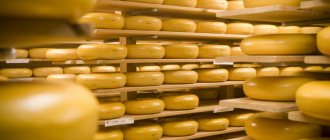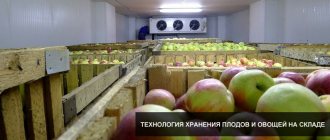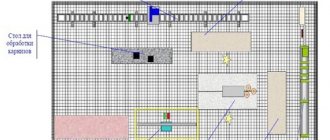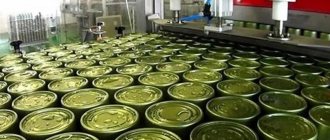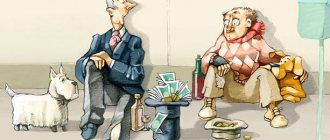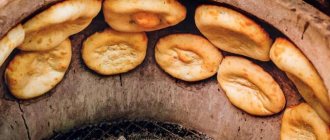Business concept
The direct product of this type of production is hermetically sealed, weighed and labeled dried fruits. Moreover, you can sell them in regular sizes, cut and crushed, assorted, and so on. Clients will be large stores and food stalls who want to buy products cheaper and sell them at a higher price.
For more serious earnings, it is worth offering a wide range. You can produce dried apples, dogwoods, apricots, prunes, pears, bananas and so on. The more different products you have in your assortment, the more customers you can serve.
Drying vegetables is a profitable business!
The increase in the volume of the dry vegetable market annually ranges from 10 to 20%; this trend continues throughout 2010-2015; this is one of the most promising markets in the Russian Federation. In addition, this is one of the most profitable businesses for the agricultural sector. If wholesale carrots in the fall cost 5-7 rubles per kilogram, and 1 kg of dry carrots requires 7 kg of raw materials, then the cost of dry carrots is 35 rubles plus overhead costs... that is, about 50-70 rubles per kg. And the selling price of such products is from 160-190 rubles per kilogram. It is no secret that when harvesting, substandard items (trifles, distortion of shape, scrap), which today amounts to up to 30%, are simply thrown away by vegetable growers. At least another 20% is lost when washing or storing vegetables. If you have your own dryer, you can obtain vegetable flour from substandard products. Farmers can also use change, since change can be bought in the fall for 0.5-2.0 rubles per kilogram.
Main range of dried vegetables:
- dried potatoes (straws, cubes, plates)
- dried cabbage
- dried beets
- dried carrots
- dried onion
- dried garlic
- dried horseradish
- dry meat products
- dry fish products.
The secret of high quality and long shelf life (1-5 years) lies in drying technologies. Drying as a method of preservation appeared many thousands of years ago, when the product was first left in the sun. Several drying technologies are used in the production of products: sublimation, convective, infrared and drum drying.
Freeze drying (or Freeze Dry): is a very high-tech process developed in the middle of the last, 20th century. The essence of the process is this: raw materials, for example strawberries, are washed and transferred to a blast freezing chamber, where within a few seconds the temperature drops to -60 °C. Next, the strawberries are fed into a vacuum chamber, where the temperature rises to 15-20 ° C, so the moisture from the solid state - ice - immediately turns into gas - steam and leaves the strawberries. The result is strawberries with 3-4% moisture, 99% vitamins and minerals, which have retained their taste, color, smell and shape. The shelf life of finished products is 2-5 years.
Convective and infrared drying: raw materials, such as onions, are washed, peeled, cut and then sent to the dryer - a conveyor belt. In it, the product is blown with hot (40-60 °C) air for 5-6 hours. As a result, the finished product contains 7-9% moisture, 80-90% vitamins, almost all minerals, the taste, color and smell of fresh vegetables. The shelf life of finished products is 1-5 years. The product is preserved as much as possible: cells are not torn, vitamins are preserved, sugar does not caramelize. Low temperatures do not heat the drying equipment, that is, there is no heat loss through the walls or ventilation. Infrared radiation at a temperature of +40...+60? C can destroy all microflora on the surface of the product, making the dry product almost sterile.
Drum drying : this type of drying is a variant of convective drying, only the last stage is different - before drying, the product is crushed to a paste. The paste is then passed between hot rollers and the finished flakes are scraped off with a knife. This method produces mashed potatoes. As a result, the finished product contains 7-9% moisture, 70-80% vitamins, almost all minerals, the taste, color and smell of fresh vegetables. The shelf life of finished products is 1-3 years. The disadvantages of all dryers are that vegetables take a long time to dry, from 3 to 9 hours with low productivity. For example, a steam belt dryer dries up to 40 kg of carrots per hour.
The VLS-AERO drying complex of similar power does this 10 times faster , since it dries up to 500 kg/hour in the same time. Naturally, this greatly reduces costs and increases profits. And the most important thing is that at the start you can invest several times less money per ton of finished products produced. The VLS-AERO drying complex combines convective and aerodynamic drying. The raw materials are crushed and fed into the VLS dryer, where the raw materials are heated with infrared rays and blown with air in a small volume. The raw materials are dried in a VLS to a certain state, then the raw materials are crushed and fed into an aerodynamic dryer. In this case, the area of the dried material increases first by 5 times, and then by another 10 times due to further grinding, and due to this, the drying process is accelerated tens of times. That is, the second half of drying goes tens of times faster, but in other dryers this happens the other way around: the closer to the finish line, the slower the moisture is released from the raw material. The drying process is the effect of diffusion, the redistribution of moisture between the environment and the raw material. The powder turns out to be the color of the raw materials, vitamins are retained by 80-90%, the smell of fresh vegetables is preserved, and the humidity of the product at the exit is 7-10%. The shelf life of products is from 1 to 5 years. The use of dried vegetables opens up great opportunities for the development of the food processing industry and is a solution to the food problem of individual regions and Russia as a whole, not to mention the significant contribution to solving the world food problem. Dried vegetables can be used as a raw material for making seasoning in household cooking. Companies producing semi-finished products, bakeries, manufacturers of fast food products, chips and snacks can use this type of product to manufacture and develop new types of products. Catering enterprises, preschool and other educational institutions will be able to solve the problem of quality and safety of raw materials and the problem of storage space for food with the help of dried vegetables, not to mention baby food manufacturers and their compliance with high requirements for manufactured products and raw materials. The target audience of dried vegetables includes different categories of citizens, from housewives, tourists, summer residents and the Russian Navy, to residents of the Far North and Siberia. Regarding the possibility of export, China and Korea, for example, willingly buy such products (especially cabbage, carrots, onions and garlic), and many European countries regenerate these vegetables or produce many products from them: chips, seasonings, sauces, etc. .P. The production of dried vegetables will be of great help to existing food industries. The use of natural dried ingredients produced by the drying method allows food manufacturers to: use dried products out of season and during the absence of fresh vegetables;
- guarantee the production of high quality, microbiologically clean products;
- significantly reduce production waste, resolve issues of waste disposal after processing of raw materials;
- reduce the cost of storing and transporting products;
- significantly reduce cooking time, energy and labor costs associated with processing raw vegetables;
- significantly increase labor productivity when preparing food in public catering;
- increase the shelf life of the product without the use of preservation agents and chemical treatments;
- reduce production costs.
Considering the relatively low productivity of the equipment and the low price, the optimal option would be the simultaneous placement of several mini-factories located in several cities in the region producing (growing) vegetables. The concentration of several lines at one large plant is irrational, since in this case the cost of raw materials increases significantly, which will have to be imported and first collected throughout the region. Placing several small enterprises, for example, within 3-4 districts or other administrative-territorial units will allow you not to lose direct contact with suppliers and significantly reduce logistics (transport) costs. This is a great opportunity for entrepreneurs and small and medium-sized businesses to occupy this niche and turn it into a permanent source of income.
Vyacheslav Kostin
What will be required for implementation?
Dried fruits are very beneficial for our body. Due to the nature of production, they cannot be stored for a long time in a normal environment, as there is a risk of spoilage in high humidity. In view of this, to implement a business you will need equipment designed for packaging and reliable sealing of the product being produced.
Before taking any steps towards the development of the enterprise, we should make a detailed list of the components that we may need.
Equipment and materials:
- equipment for quick drying of fruits;
- equipment for sealing and soldering bags;
- packaging printing equipment;
- directly the fruits that we will dry.
With the advent of modern technologies, there is no need to manually dry fruits for weeks and then ventilate the room from their smell. Modern machines are fully automated for these tasks and allow us to produce high-quality dried fruits in a short time (up to several hours).
It is better to hire two people working in shifts to weigh and package finished products.
Relevance and features of business
Selling dried fruits and nuts as a business is profitable at any time of the year. The relevance of this matter is as follows:
- With the popularization of the transition to a healthy diet, dried fruits and nuts began to be purchased more often for a snack, to take with you on the road, or just at home as a substitute for sweets and cakes.
- In the season when there is no fresh fruit, or there is one, but at exorbitant prices and not of the best quality, dried fruits are especially held in high esteem.
- The product is stored for a long time and retains its good appearance for a long time, unlike fresh fruits and berries.
So you can successfully sell all year round, unlike trading in fresh berries and fruits.
Financial calculations
This type of activity can be called one of the most profitable and fastest-paying. The purchase of equipment will not require a large amount of money, and all expenses will pay off in the first two to three months, depending on the quality of the products produced and the number of customers served.
Start-up capital
Initial business expenses will take at least forty to fifty thousand rubles. These include:
- purchase of equipment (fruit drying and packaging of the finished product) - from 30 thousand rubles, depending on the quality and company;
- expenses for registering a business and obtaining documents – from 10 thousand rubles;
- advertising costs – from 10 thousand rubles;
- initial purchase of fruit for the first trial batch - from 10 thousand rubles.
As a result, you will need 60,000 rubles to start implementing this idea.
Monthly expenses
It is necessary to allocate at least 60 thousand rubles from the budget every month. The money will go to:
- workers' salary - from 40 thousand rubles, depending on the number of people;
- purchase of fruits – from 10 thousand rubles;
- payment for utilities - from 5 thousand rubles;
- premises rental – from 10 thousand rubles.
How much can you earn?
Profit directly depends on the number of your customers, sales volumes and product cost. With minimal effort and small supplies, you will receive 20 thousand rubles in net profit monthly.
Payback
Due to the cheapness of fruits and the high cost of dried fruits, business has great advantages in terms of payback. On average, all expenses will be covered in the first two to three months of production.
Selling Features
So, if the issue with raw materials is resolved, all that remains is to find a way to sell. At first, it is better to refuse to rent a tent at the market or a section in the store. You can search for potential buyers on the Internet or offer dried fruits to your friends.
Gradually, the number of customers will increase, and with it the demand for your products. In this case, you can think about renting a tent at the market. However, you need to choose the location very carefully. There should be no competitors near you.
Just a few counters will be enough to place dried fruits. Also, don't forget an accurate scale.
Investments at the initial stage of sales are small. However, the biggest problem is attracting customers. If you manage to find those who purchase large quantities of dried fruits for catering establishments, you will increase your turnover and your own profit.
In India, old buses are being converted into food trucks
How to buy an inexpensive car in Germany: traders in the northwest and Swabia are more reliable
Swimming pool, wine cellar: a businessman turned an old monastery into a luxurious mansion
Bottom line
Due to the small number of competitors in the market, an entrepreneur who owns this production will be able to quickly find regular customers. This type of activity has no limits, and you can have at least 10, at least 100, at least 1000 clients, but as their number increases, you will have to increase production volumes. The business is well suited for experienced individuals, but even if you are a beginner, it is possible to advance the business by first learning how to obtain a marketing permit and legalize food production.
How to open a dried fruit and nut store
For a business to be successful, you must first resolve the following issues:
- Create an assortment of products. To do this, you need to analyze consumer demand, what your competitors offer and at what price.
- Register as an entrepreneur.
- Organize a retail space.
- Hire staff.
- Find suppliers.
It is unlikely that you will be able to do without advertising unless you simply trade on the market.
Product range
If we focus on consumer demand, the range should include the following products:
- prunes – dried and dried;
- several types of dried apricots;
- light and dark date;
- raisins - light and dark;
- figs;
- dried and dried peach;
- several types of dried berries - rose hips, cranberries, cherries.
From nuts:
- walnut – fried and raw;
- peanuts – roasted and raw;
- cashew nuts;
- almond.
You should not take too expensive varieties of nuts, as they will not be in demand. But, if you have the opportunity to supply them, you can do it to order - notify your customers that such a service is available.
The above assortment of goods is approximate; as trade develops, it will have to be adjusted, since something will be in greater demand, something less, and something will not be available at all at first, but will have to be included in the assortment.
Business registration
A business selling nuts and dried fruits does not require registration of an LLC if you have one outlet and do not have a large enterprise. At the start, you can definitely get by only as an individual entrepreneur, especially since the registration procedure here is much simpler and cheaper.
We wrote in detail about how to register as an individual entrepreneur here.
In addition to registering your activities, you will also need to obtain quality certificates for your products, since we are talking about food products. You will also need to obtain permission to operate from the sanitary and epidemiological station and the fire inspectorate.
Trade premises
A small store of 40-50 square meters will be enough. The retail outlet must meet the following requirements:
- In addition to the sales area, there should be a utility room that is dry and warm, as these are important factors for proper storage of goods;
- There must be a bathroom and a staff rest room;
- the premises must meet sanitary and hygienic requirements, since we are talking about food trade;
- all communications must be connected;
- take care of the security of the premises.
For trading you will need the following equipment:
- trade racks for goods;
- cash machine;
- consumables – packaging, gloves for the seller;
- chair, table, kettle and microwave for the rest room.
Now about the staff. For a small retail outlet, one seller will be enough. If you plan to work seven days a week and until late, then you need to hire two salespeople who will work in shifts.
The seller must:
- have work experience;
- have a health certificate that is not expired.
Having a Sanitation Book is mandatory, as this is a food trade.
You need to start looking for suppliers before opening a retail outlet. It is advisable to purchase goods at wholesale stores, where the price will be favorable. Be sure to check the availability of quality certificates from your suppliers.
What documents are needed to open?
The main document authorizing the activities of food enterprises in Russia is the expert opinion of SES specialists. To obtain it, you must collect the following documents:
- certificate of registration with the tax service;
- certificate of registration of a legal entity;
- extract from the register of legal entities;
- lease or purchase agreement for industrial premises and space;
- plan of the Bureau of Technical Inventory (BTI);
- conclusion of an SES from the previous owner or tenant of the premises (if any);
- assortment list of commercial products;
- technological project and project for redevelopment of premises (if there was redevelopment);
- control of dried fruit production;
- contracts for disinfestation, deratization, garbage removal, washing of work clothes, disposal of fluorescent lamps, medical examinations of employees, maintenance of ventilation systems;
- books for recording work on cleaning and disinfection of ventilation systems, accounting for disinfectants;
- workers' medical records.
Equipment is the key to development
The production of dried products can be developed to any size. There is no shortage of raw materials in our country. Specialized equipment will help cope with large volumes.
It makes more sense to purchase a full-fledged complex. He does the work from washing to packing. The cost depends on the set of functions and bandwidth. The price fluctuates around $1000.
Another advantage of the equipment is the ability to perform its maintenance independently without outside help. This means that the labor of hired workers will not be needed.
Packaging for the sale of dried fruits
First you need to decide on the consumer of your product. If the enterprise is standard, then among the clients there will be both end consumers and wholesale buyers - retail stores, grocery chains, etc.
Accordingly, the choice of packaging for selling the finished product will also be aimed at two sales channels.
Dried fruits for the end consumer can be packaged in small boxes (blisters), or special craft bags or bags can be used. Such packaging will allow you to comply with the standards and hygiene of the purchasing process.
Among the second option of buyers, in addition to trading enterprises, to which you can also ship in already packaged forms, there will also be enterprises that purchase your goods for their own use, but in large quantities. We are talking about various educational institutions, military units, hospitals and so on. The packaging for sale to this customer sector can be decided upon by discussing convenience and details directly with the buyer. However, before the negotiation process, you should have options ready to propose.
There is another category of clients among the wholesale buyer. These are manufacturers of breakfast cereals. They also often use additives in the form of dried fruits and berries in oatmeal, instant cereals and other products. Such a client can be offered delivery in sealed containers, boxes or bags.
If we talk about the packaging itself, it is important to place on it the most useful information about your company and contact information. This will be a good way to promote your product without investing heavily in an advertising campaign.
The packaging should also contain information about the product. It is important to inform the buyer about the environmental friendliness and purity of the product, its storage conditions, expiration date, place of production, and other things that may raise questions. It is better to be based on the principle of importance and interest.
Range
For the production of dried fruits, fruits and berries that have a low cost are ideal: apples, plums, pears, cherries, apricots and others. Today, dried fruits are actively sold by weight in trade pavilions and markets. In addition to dried fruits, it is appropriate to dry herbs: dill and parsley. You can grow the raw materials yourself, or you can buy fresh herbs from farms.
Also, one of the types of raw materials for drying can be forest blackberries, aromatic raspberries or juicy strawberries. By signing the appropriate agreement with the forestry department, you can stock up on wild berries. The advantage of such drying is the preservation of the medicinal properties of the berries, which will allow the product to be successfully sold during the cold season.
Step-by-step plan for starting a dried fruit production business
According to professionals, the initial investment in a dried fruit production enterprise will be at least 2 million rubles. The main funds will be spent on equipping production and technological premises, rent, obtaining permits and documentation, purchasing raw materials, equipment for the production of dried fruits and paying employees.
The production of dried fruits has the following requirements:
- availability of water supply and sewerage is required;
- a three-phase power supply is required;
- the building must have at least 5 production premises, a warehouse and a spacious courtyard, an office and rooms for employees.
The main mistake of many entrepreneurs is that they immediately start renovating premises, buying and installing equipment. First, you must obtain permission from Rospotrebnadzor to open food production. And only then, taking into account the recommendations issued by his specialists, carry out the necessary work. The technological design of the future enterprise and the list of redevelopment of premises (if redevelopment is needed) are also agreed upon with Rospotrebnadzor.
The technological project itself is ordered from a specialized design company. Taking into account GOST, SanPiN, legislation, SES and Fire Supervision standards, it is extremely difficult to do it yourself.
Investments in automotive equipment will also be required: for business purposes, at least 1 truck will be needed to deliver raw materials and finished goods.
